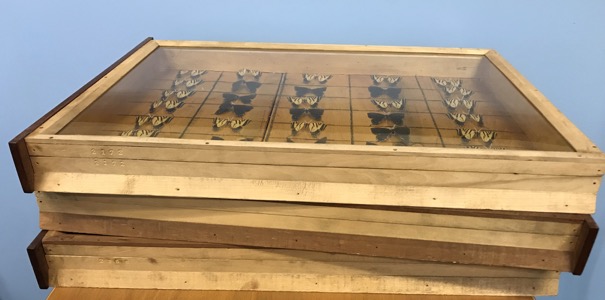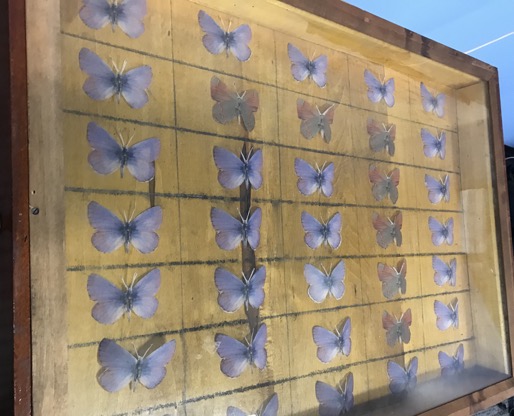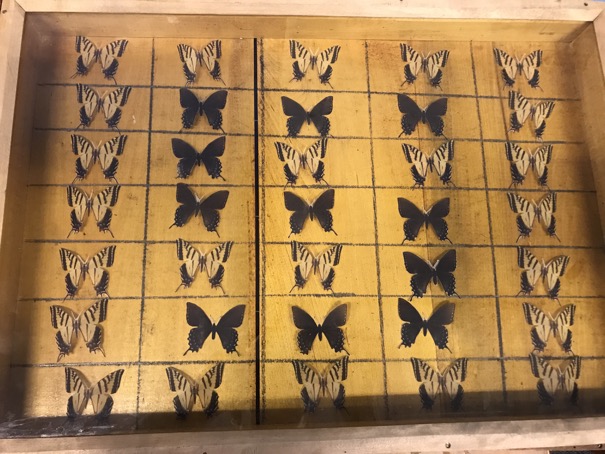Educational Escape Room
Duration: 15 Weeks
Platform: Physical Prop Puzzle & Prototypes
Client: Cleveland Museum of Natural History - Cleveland, OH
In the Fall of 2018, I worked as a Research Assistant with the Human Computer Interaction Institute at Carnegie Mellon University. This project was in collaboration with the Cleveland Museum of Natural History to explore what Escape Rooms would look like in a traditional "Academic Institution" setting.

I designed a series of puzzles that were the starting off point for a future project at Carnegie Mellon's Entertainment Technology Center. One of which was a butterfly puzzle that guests would use factual butterfly entomology as a way to correctly place the butterflies as a means to discover the next clue.

I printed accurate butterfly depictions of various families on vellum then cut them to size and placed them in specimen trays. The guest would have to use clues on given classification sheets to make sure the butterflies were positioned correctly in order to discover a pattern revealing a number.

This research was a proof in concept to see if an experience based on educational knowledge would be entertaining enough to become a viable project. The following is a short summary of my findings:
"Escape rooms have become popular location-based experiences where individuals or groups work to solve puzzles in order to advance through gameplay. Aside from overarching thematic elements, these experiences rarely have a narrative that propels the play forward; instead relying on a series of puzzles that may be fun or interesting but have little correlation with each other or the meta storyline the guest has been asked to follow. Oftentimes, these narratives are hardly more than a sentence or a command: “Find the mad scientist’s antidote;” “Break the mummy’s curse;” “Help us find the murderer.”
By investigating how guests interact with each other and the puzzles composing the experiences, designers can create more engaging, captivating, and comprehensive experiences that serve the overarching narrative of the storyline that opens up the possibility for content that builds upon itself. By doing so, guests have the opportunity for impactful learning opportunities rather than a series of superficial brain teasers which can get repetitive.
Allowing for the opportunity for the guest to insert themselves into the storyline and have the puzzles inform the narrative and visa versa can open up the experience to be more immersive and engaging. In role-play, guests actively take on a character transformation through improvisation. In situational puzzle-solving, taking on an activity that is directly correlated to the overarching narrative in this engaging manner could be used to approach educational topics.
By framing one of these escape rooms, or situational puzzles around an educational topic or domain - learning objects could be reinforced through strategic puzzle design. Designing puzzles with layers that enhance learning in a specified subject matter could engage the public in spaces like libraries and museums by creating installations or spaces that draw in demographics looking for shared puzzle experience.
The trick then is to design puzzles that aren’t transparent in their educational tone. In order for the guest to be engaged, they need to be challenged. The puzzles should align with or propel the narrative forward in a way that is surprising. Providing a series of challenges that are similar in style or tone will be monotonous and eventually become easy for the guest to solve.
There is an opportunity to design situational puzzles with advancing clues that follow narrative devices to transmit learning objectives. By immersing the guest as an active role player, academic-oriented experiences could be transformative and fun. There is an uptick for location-based puzzle experiences in social contexts, by tapping into the current trend aging academic institutions could draw in new visitors and the next generation of patrons to utilize their resources. "